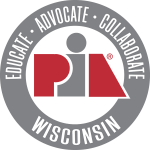COVID-19 Update for Members
March 26, 2020
FFCRA: How to follow the new employee leave mandates and get reimbursed by the Feds
The Families First Coronavirus Response Act (FFCRA) creates new, mandatory, requirements on employers to provide paid leave to employees if their absence is related to a pandemic.
-
- Does not take effect until April 1, 2020. No leave paid prior to that date will be reimbursed by the feds. Ends on December 31, 2020.
- First 2 weeks: Up to 10 days of sick leave. At full pay (max. $511/day) when the absence is related to the employee’s infection, testing or quarantine for COVID-19. At 2/3 normal pay (max. $200/day) allowed when the absence is to care for a family member.
- Weeks 3-12: Family and Medical Leave Act (FMLA) expanded to cover employers of less than 50, ONLY when leave is for the purpose of caring for a child displaced from school or daycare. The displacement must have resulted from the COVID-19 pandemic. Required pay is 2/3 normal pay (max. $200/day and $10,000 total).
- All of this leave will be reimbursed by the IRS in the form of payroll tax credits. When you file your quarterly Form 941 payroll tax return, you will deduct the amount you have paid employees in qualifying leave payments, and the amounts you have spent on their health care premiums while on leave, from the payroll taxes you owe. If your leave expenses are greater than your payroll taxes, you may file an immediate claim without waiting for your quarterly filing. That claim form does not exist yet, but should be posted by the IRS within days. IRS guidance on credits
- Every employer must post a new labor poster explaining FFCRA benefits, the same way they post other labor posters in the workplace. Download or print the poster, here.
- Questions? Call Pete at the PIAW office 608-274-8188.
CARES Act: What does the $2 Trillion coronavirus bailout bill do for small businesses like mine?
The CARES Act is a $2 Trillion stimulus bill that is expected to clear Congress and be signed into law by President Trump, tomorrow. It is not just relief for individuals and airlines. It creates new grants, loans, and tax credits for small businesses, as well.
